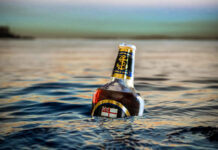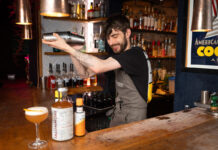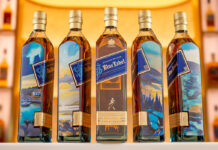Operators who offer customers premium varietals will prosper, say suppliers

FOLLOWING the tumultuous political events relating to Brexit throughout the year, it’s fair to say businesses have had a sizeable degree of uncertainty to contend with of late. But while the final terms of the UK’s divorce from Europe remain opaque, one thing that is clear is the consumer demand for escapism and high quality drinks in the trade this Christmas.
And one drinks category which operators should pay special attention to is wine, according to suppliers.
Jessica Smith, marketing executive at Continental Wine and Food (CWF), said Christmas is “a fantastic time to encourage consumers to trade up to a more premium offering”.
“Reports state that UK consumers are drinking less, but drinking better quality wines and spirits, which provides a good opportunity for restaurants to stock more premium options than they usually would,” she said.
Andrew Mackay, territory manager at Enotria & Coe, echoed this view, stating that both wet-led pubs and food-led venues can expect an uptake in wine sales in the coming months.
“Stylistically a focus on bigger, richer styles of red, old school Bordeaux and Burgundy, or Amarone, which creates the perfect opportunity for up-selling, particularly if available by the glass,” he said.
“For whites, a great opportunity for bigger, richer styles – oaked Chardonnay from France, or looking to the States with buttery styles from California.
“Most importantly, the festive season shines a light on sparkling; and a celebratory atmosphere encourages customers to upgrade to higher price points.
“The classic is Champagne, but if the price point is too high, the likes of a Crémant or adding a high quality Prosecco can work just as well.”
Christmas is a fantastic time to encourage customers to trade up to more premium wines.
Jon Harris, sales director – Scotland at Hallgarten & Novum Wines, agreed that operators need to stock “a good and well-priced” range of sparkling wines.
“The increased growth in the sparkling wine category will continue to influence drinks purchasing decisions,” he said.
“For some people, Champagne is seen as too expensive, and for me Prosecco is now seen as a simple commodity; quality is falling, whilst prices are rising.
“We are finding more and more operators looking to explore sparkling wines different to the norm by adding other well-priced sparkling wines to their list, such as sparkling Sauvignon Blanc from Argentina, Cava from Spain and Crémant from around France.”
Another important consideration on the wine front this year is low and no-alcohol varietals, according to Andrew Turner, director of wine for Halewood Wines & Spirits.
He said: “According to the Office for National Statistics, around one in five adults in the UK is now teetotal – about 8% more than ten years ago, indicating that this isn’t a trend that is set to die out any time soon.
Turner added: “What has previously been perceived as a beverage exclusively for designated drivers has now evolved into a common lifestyle choice, resulting in a sharp rise in consumers who are in the market for easily accessible alternatives that don’t compromise on quality or taste.”
Another way to cater to customers looking to lower their alcohol intake is by expanding your serve options, reckons Tom Platt, sales director at Liberty Wines.
“Many consumers are curbing their alcohol intake, so it is imperative to have a greater selection of wines available by the glass,” he said.
“That way, consumers who wish to keep their consumption low do not have to compromise on quality or choice.”
Victoria Beckett, sales director at Alexander Wines, reinforced this view, stating that offering more wines by the glass during the festive period allows customers “to stretch up into a wine they may have previously found prohibitive when only available by the bottle”.
“Careful wine list ‘laddering’ – gradually climbing in price into the more premium wines – [means] customers are much more likely to trade up,” she said.
The advantages of a well-defined, carefully considered wine menu were also highlighted by Harris of Hallgarten & Novum Wines.
He said: “Make the menu work for you and make sure you take advantage of the increased footfall, because we all know how challenging January and February are – and 2020 could be the toughest in decades.
“Use list architecture and key varietal positioning to drive quality and cash margin. For example, don’t have recognisable varieties – Sauvignon Blanc, Pinot Grigio, Merlot, etc. – in your entry point sections of the list.
“They may be of poor quality and it blocks guests from exploring the rest of your list, thus limiting average spend. Instead, offer the guest exciting, lesser known wines at the entry point and quality, well-known varietals at slightly higher price points.”
Profits in pairing
My suggestion is a classic versus esoteric match-up, similar to below:
Scottish seafood starter – smoked salmon, scallops, etc.
Classic: White Burgundy.
Esoteric: Malagousia from Epanomi in the north.
Turkey with all the trimmings
Classic: Nebbiolo from north-west Italy is a special treat at Christmas.
Esoteric: Pinot Noir – I recommend Kalecik Karasi from Anotolia in Turkey.
Christmas Pudding
Sweet wines – sweetness and acidity resets the palate.
– Jon Harris, Hallgarten & Novum Wines.



















